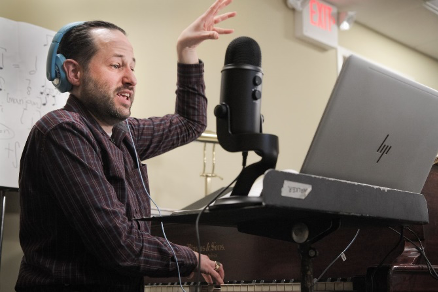
Right now, Australia has become a Zoom world! Even if you had never used Zoom as a video software platform, in this pandemic it is likely you have used it as a virtual hangout for work or play.
Zoom’s explosion of new traffic comes as people have been isolated from the coronavirus lockdown. As businesses have sent staff to work from home, for those people lucky enough to still have jobs, workplace conferences are Zoom’s remote collaboration tool. Staying in contact with family and friends as people are isolated means a yearning to have some form of human contact makes inspiring them to take up on screen technologies.
Zoom’s security and privacy flaws have been a concern and a target for attackers. Australian MPs, Senators and the Australian Defense Force have been banned from using Zoom for meetings and conference calls due to security concerns.
To avoid having your data being hacked or your privacy invaded, a new more secure Zoom update will be available on May 30, 2020.
1. Businesses

While some companies are banning employees to use Zoom due to concerns about security flaws. Swathes of companies have still moved their core functions online, as workers were sent home during lockdown restrictions. Remote work and a mobile office have seen an unprecedented take up of Zoom technologies as teams are brought together in its virtual meeting room.
One of Zoom’s advantages is the scheduling function for meetings, enabling creation and hosting of meetings in its multiscreen meeting room and video conferencing technology.
Sensitive business meetings should be approached with caution and if data privacy is needed other more secure methods are being used.

2. Hospital clinics

To help with social distancing in the COVID-19 pandemic, everyone with a Medicare card became eligible for telehealth consultations. Zoom for Telehealth enabled is used for web-based consultations with the GP, psychologist or other health care providers via video or phone, so the patient need not present themselves to the hospital or surgery.
Zoom is being used as a video platform to treat patients by integrating into the user’s technology. This means safety and security of personal information could have issues in the tools offered in Zoom. Telehealth security must be the same standard as any other health record system. Caution of these videoconferencing techniques has brought into question the telehealth security in order to protect patients’ consultations, diagnosis and data must be the same standard as any other health record system.
3. Schools and Colleges

Updated offerings and resources for educators in response to the COVID-19 pandemic, has seen Zoom teams working to provide teachers and students the resources they need to quickly bring about a virtual classroom. Students participating in online classes and continue their studies online; means they must be able to use Zoom for virtual instruction with ease. Information is available for securing the virtual classroom with an option to admit participants individually or at once. Teachers can schedule their classes and send invites out to students.
In Australia, the 40-minute meeting limit on basic accounts for K-12 schools can be lifted and Zoom has put together a security resource for educators teaching over Zoom.

4. Alcoholics Anonymous and Gamblers Anonymous groups

Alcoholic Anonymous groups who are using Zoom for their meetings in lockdown, find the video conference style app to be the connection sufferers need to help with their struggle of this addiction. Meetings are a lifeline to stay on a successful path and Zoom enables people to share their experience, strength and hope to each other.
In the coronavirus pandemic widespread shutdowns in church basements, city buildings, community halls and anywhere where the groups meet have forced those who support recovery of others to look for online help. It is not only Alcoholics Anonymous that are now using virtual meetups on Zoom but Gamblers Anonymous, Narcotics Anonymous, Overeaters Anonymous etc. have all faced group decisions to stay in contact via virtual rooms. A significant number of the population are more vulnerable to COVID-19 than others as well as those feeling uncomfortable to leave the house in the social distancing lockdown are seeing the chance to meet up on screen is a lifeline.

Finding a Zoom meetings close by and on the day or time you need it is as easy as going to the group’s website for instance with the AA you can look on the find meetings page and click on saying ‘Join Zoom Meeting’. The instructions to download the Zoom app follow on from there. Anonymity is encouraged by asking users to turn on maximum security setting but as trolls (a person who upsets people on the internet by posting off-topic messages) scour the internet for links to video conferences, they have been found to harass participants with Zoom-bombing (gate-crashing). Zoom settings can be configured to prevent disruptions from intruders.
5. Family reunions

Even under normal circumstances, before social activities were limited in the COVID-19 pandemic, getting family members who do not live nearby together was a logistical challenge. The idea of going on Zoom as well as other easy-to-use internet technology for having a virtual gathering, has enabled family reunions, having birthdays and even grandma reading a book to several grandchildren across the country with just a press of a button. Having dinner together in self isolation measures can get overpoweringly lonely but Zoom gives a chance for people to gather in front of their respective laptop screens and chat over dinner. Virtual lunches are also catching on as the workforce miss the social chit chat in a lunch break.
It should not come as a surprise that hackers can crash the Zoom party as they snoop on your family reunion and share inappropriate material. There are several measures to protect your virtual party from Zoom-bombing interrupting your meet up. Disabling guest screen sharing, requiring the host who starts the meeting to be present, use a unique meeting ID for each separate meeting and use the waiting room feature.

6. Churches

Diving into a digital ministry has become a critical tool for churches to connect with church members. Members of the congregation can gather virtually for bible study, have coffee dates, and support other members. This is especially important for people who are immune compromised in the coronavirus pandemic or live in retirement communities and have isolated themselves in lockdown.

Many churches have streamed their services for a long time now without seeing their audience in the pews. Closing places of worship in the pandemic and social distancing constraints means saying goodbye is unimaginably difficult when someone dies. Attending funerals over zoom has enabled grieving relatives and friends to watch the proceedings in real time and mourn from a distance, without the risk of being physically present.
Unfortunately for digital parishioners, security issues have been compromised as Trolls access and disrupt services with obscene or hateful interruptions.
7. Exercise classes

Many Australians are finding online exercise classes to do in their own home when self-isolating or social distancing in the coronavirus pandemic. Workouts which include Pilates, yoga, living room friendly workouts, cardio and strength training are being offered online giving instruction with zero physical contact from a virtual gym. Some start early in the morning and need minimal gym equipment. Others are not strictly for indoors as they also offer a solo running program.
As fitness fanatics visit any sports shop that may be open in the pandemic for weights and fitness apparatus, sales online have cranked up their prices due to the demand.
The exercise class will automatically begin in Speaker View and you can see your own video. If you do not want to see yourself, there is an option to right-click your video to display the menu, then choose ‘Hide Myself’ so that you will no longer see yourself but others in the meeting can see the video of you. To eliminate this, at the start of the Zoom class turn off your camera and mic and make sure you have a webcam cover too so you will not be seen.
8. Happy hours and trivia nights

Happy hours, wine tasting and whisky clubs’ gatherings on Zoom allow friends to feel connected during lockdown. A good gossip session, drinking games and even virtual bartenders can be added for fun. Virtual happy hour activities can have word games as ice-breaker questions or many other Zoom games to add variation to the meet up.
People with a competitive nature are biting the bullet and hosting a weekly Trivia Night or Game Night for friends to come together on Zoom. You need to establish as a group a parameter of the trivia or game night. How long you must debate the answers in their breakout room feature as well as how many rounds you want to move through, need to be decided. On Zoom there is a random trivia generator which can be opened to start asking questions. Every person can send their answer in Zoom chat at the same time. As every trivia or game night is virtual, ground rules need to be established though as you will need everybody to swear that they are not using their phones for the answers!
Zoom has also a whiteboard feature to play Pictionary and Hangman whilst sharing the screen.
9. Therapists and psychiatrists

With patients sheltering at home, therapists and psychiatrists are using strategies for face to face support in virtual therapy sessions. Platforms like Zoom enables the client to see, hear and interact with the trained professional virtually instead of in the therapist’s office. The face-to-face approach could even be less intimidating than meeting up in a clinic or an office and could even be cheaper.
The demand for their services is higher than ever as young people out of school, or people who have lost their jobs due to the pandemic, experience increased isolation, anxiety, depression and family burdens. Widespread social distancing too is taking its toll on mental wellbeing and again, making mental health services in high demand. The shift in social safety nets to virtual ones, also helps as an option for patients in rural areas. Zoom counselors can also help their clients who want to attend group therapy sessions as well. Understandable the meetings must be kept private so these sessions must be approached with more caution and knowledge of Zoom’s security settings.
10. Choirs

In the videos of cities in lockdown coming together to sing from their balconies has inspired people to join a virtual choir is an option.
Many choir masters have already pulled together their members as Virtual Zoom choirs by having their rehearsals online during the pandemic isolation. Choral music makes being together in the same space is essential. Learning a new song together with options to attend live or watch the catch-up later is easing the emptiness of not being connected on a weekly basis.
Zoom software is simple to use. If the members have a computer, tablet or iPhone appropriately positioned, then the choir leader can interact with them in the rehearsal. There are tutorials online from choir masters to guide their members through the steps to set up and join into rehearsals.
The free version allows up to 100 participants for up to 40 minutes a time or if a fee is paid, rehearsals can be a lot longer. At any point, a choir member can raise their virtual hand to ask a question. Some teachers have commented on having too much lag time but the overall result of choirs singing together during isolation is uplifting. Even a chorus of Alzheimer’s patients singing through shutdown on Zoom can be found!

